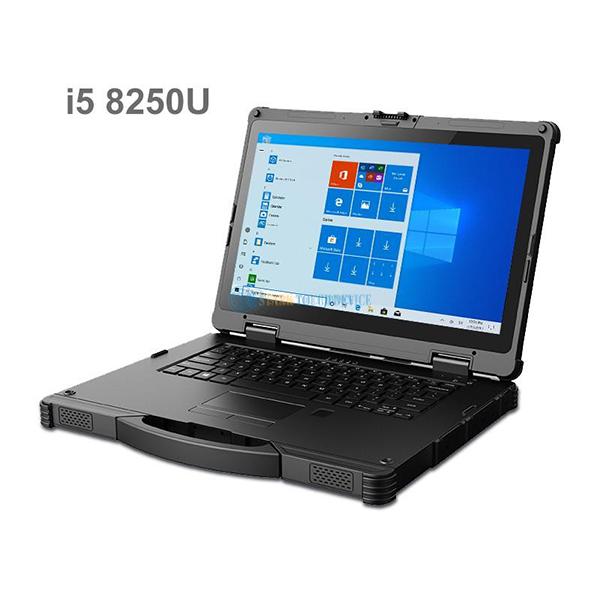Welcome STARK TOUCH DEVICE!
Solutions
Drying treatment after cleaning of industrial control computers
Post-Cleaning Drying Techniques for Industrial Control Computers
Proper drying after cleaning industrial control computers (ICCs) is critical to prevent moisture-related damage, such as corrosion, electrical shorts, and component failure. In humid or industrial environments, residual water can accelerate degradation of sensitive electronics if not removed thoroughly. This guide outlines effective drying methods to ensure ICCs remain operational and reliable after maintenance.

Understanding Drying Risks and Requirements
Even small amounts of moisture trapped inside enclosures or on circuit boards can cause long-term harm. Capacitors, resistors, and integrated circuits are particularly vulnerable to oxidation when exposed to humidity over time. Additionally, water droplets on connectors or switches may create conductive paths, leading to unexpected system behavior or failures.
The drying process must balance efficiency with safety. Avoid using high-heat sources like hairdryers, which can warp plastic components or damage temperature-sensitive parts. Instead, prioritize controlled airflow and humidity reduction to gently remove moisture without introducing new risks.
Airflow-Based Drying Methods
Using compressed air or fans is one of the most effective ways to dry ICCs after cleaning. These methods rely on forced air movement to displace moisture without physical contact, reducing the risk of static discharge or mechanical damage.
Compressed Air Techniques
After cleaning, use filtered compressed air to blow out moisture from hard-to-reach areas, such as ventilation slots, cable channels, and between circuit board components. Hold the nozzle 15–20 cm away from surfaces to avoid concentrating air pressure, which could dislodge small parts or force water deeper into crevices.
For systems with removable modules, such as I/O cards or memory sticks, dry each component individually before reinstallation. Direct airflow at a 45-degree angle to ensure moisture evaporates from all sides. If possible, rotate the component during drying to expose hidden surfaces.
Enclosure Ventilation Strategies
If the ICC is housed in an enclosure with ventilation openings, position fans outside the cabinet to create positive airflow. This draws dry air through the system, accelerating evaporation while preventing dust ingress. Use low-speed fans to maintain gentle circulation, as high-speed airflow may generate turbulence that redistributes moisture.
For enclosed systems without built-in ventilation, temporarily remove covers or panels to improve air access. Place the ICC in a clean, dust-free area with good ambient airflow, such as near an HVAC vent or in a dedicated maintenance room. Avoid exposing the system to direct sunlight, as UV rays can degrade plastic housings over time.
Humidity Control and Desiccation
In environments with high ambient humidity, passive drying methods alone may not suffice. Combining airflow with humidity-reducing tools ensures thorough moisture removal and prevents reabsorption during storage or operation.
Using Desiccants for Enclosed Spaces
Place moisture-absorbing desiccant packs inside the ICC enclosure during and after drying. Silica gel or clay-based desiccants are effective at trapping water vapor without releasing harmful chemicals. Choose packs with color-changing indicators to monitor saturation levels; replace them once they turn pink or orange, signaling full absorption.
For larger enclosures, use multiple desiccant packs distributed evenly to maximize coverage. Secure them away from moving parts or heat sources to prevent accidental contact or melting. If the ICC will remain powered off for an extended period, leave desiccants inside to maintain low humidity levels during storage.
Controlled Environment Drying
If available, move the ICC to a climate-controlled room with dehumidifiers to reduce ambient moisture. Set the dehumidifier to maintain relative humidity (RH) below 50%, as lower levels accelerate evaporation and inhibit corrosion. Use a hygrometer to verify conditions before and after drying to ensure consistency.
For critical systems requiring rapid drying, consider using a drying cabinet or chamber designed for electronics. These units combine controlled temperature, humidity, and airflow to safely remove moisture from complex assemblies. Follow manufacturer guidelines for operation to avoid overheating or over-drying components.
Component-Specific Drying Considerations
Different parts of an ICC require tailored drying approaches to prevent damage or performance issues. Pay special attention to areas prone to moisture retention, such as connectors, switches, and cooling systems.
Drying Connectors and Cables
Moisture in connectors can cause oxidation, leading to poor electrical contact or intermittent failures. After cleaning, inspect all connectors for visible water droplets or condensation. Use a lint-free cloth slightly dampened with isopropyl alcohol (IPA) to wipe contacts, then blow dry with compressed air.
For multi-pin connectors, such as D-sub or ribbon cable interfaces, use a dedicated cleaning tool with soft bristles to dislodge moisture from between pins. Avoid inserting foreign objects into connectors, as this may scratch contacts or bend pins. Allow connectors to air-dry completely before reconnecting cables.
Cooling System Maintenance
Fans and heatsinks often trap moisture during cleaning, requiring thorough drying to prevent motor burnout or reduced cooling efficiency. After wiping down fan blades with a dry cloth, rotate them manually to ensure no water remains in the bearings. Use compressed air to blow out dust and moisture from heatsink fins, holding the nozzle parallel to the fins to avoid bending them.
For liquid-cooled systems, check tubing and reservoirs for residual water after cleaning. Verify that all connections are tight and free of leaks before restoring power. If the system uses a radiator, tilt it gently to drain any trapped water, then dry the exterior with a soft cloth.
By following these drying techniques, technicians can ensure industrial control computers remain free of moisture-related damage after cleaning. Regular maintenance and attention to environmental conditions further enhance system reliability, reducing the risk of unexpected downtime in critical applications.


